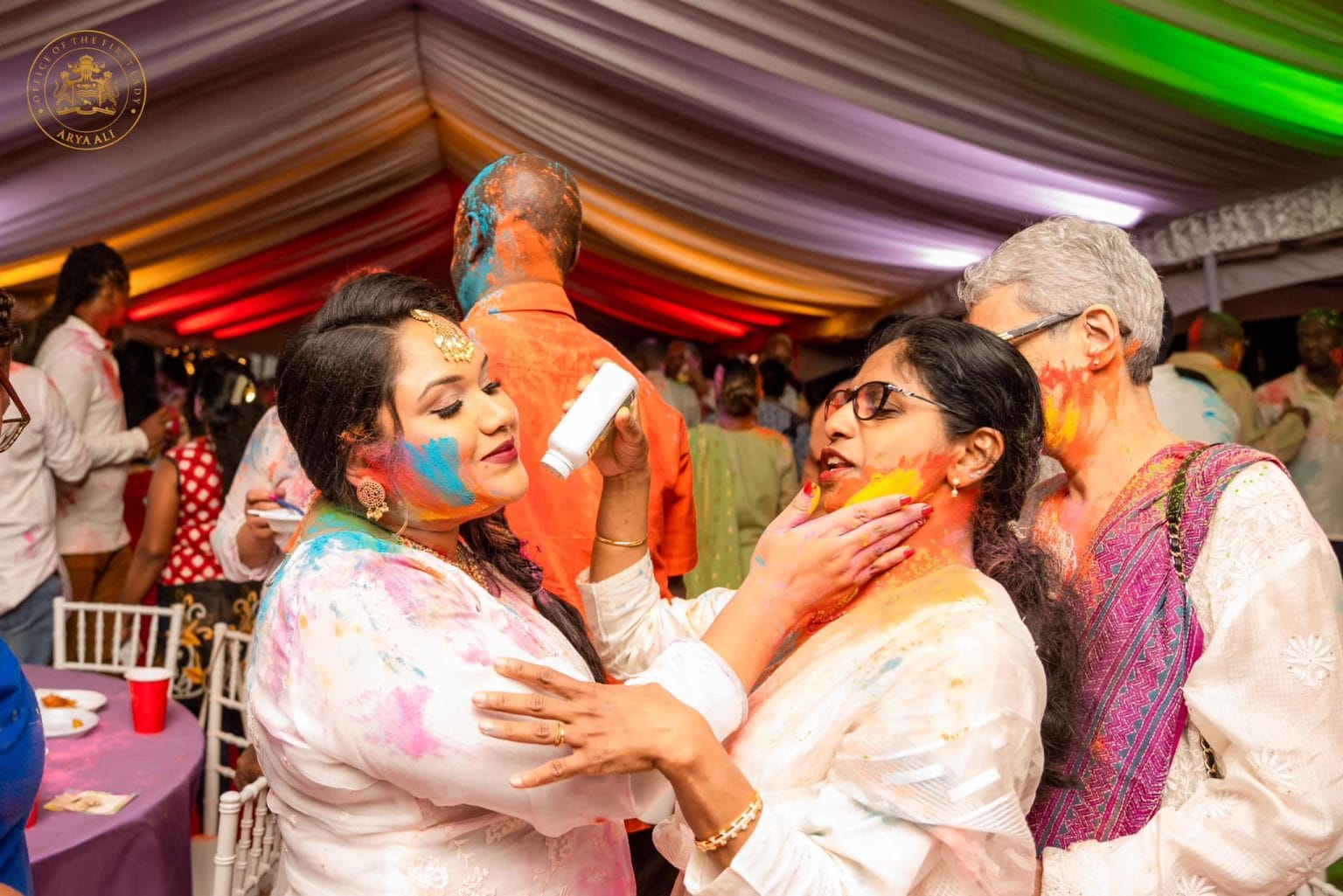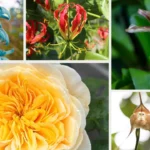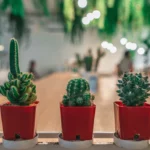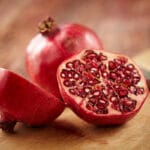Get ready for a vibrant celebration that goes beyond religion and brings the whole country together in a riot of colors and joy! Join us as we explore the amazing story of Holi Phagwah in Guyana, a festival that marks the start of spring and showcases the rich history and traditions of this beautiful country.
Guyana’s Colorful Tapestry: Fun, Culture, and Togetherness
Imagine a party so bright and lively it practically explodes with color. That’s Holi Phagwah in Guyana, a celebration that’s nearly impossible to leave without a grin (and probably some colorful stains too!). This amazing festival, brought over by Indian folks ages ago, has become a unique Guyanese tradition where everyone’s invited to join the fun.
A Celebration With Deep Roots
This color-throwing extravaganza likely has its roots in the Hindu festival of Holi, a celebration all about the victory of good over evil and the excitement of spring. In Guyana, this awesome party goes down on the last full moon of Phalgun, a Hindu month that usually falls somewhere between February and March.
Two Days of Pure Joy
Get ready for a two-day celebration that’ll leave you buzzing! Day one, called Holika Dahan, centers around a powerful bonfire that represents the destruction of all things bad. Then comes the main event: streets transform into rivers of color as people parade around, singing energetic chowtaal songs, and playfully showering each other with brightly colored powders and water. It doesn’t matter if you’re young or old, everyone gets in on the action, making it a giant, happy, inclusive party for the whole country.
More Than Just a Pretty Picture
Those vibrant colors flying through the air aren’t just random, they’re full of meaning! Red symbolizes love and new beginnings, green represents growth and prosperity, and yellow stands for knowledge and wisdom. The act of throwing color on each other helps break down walls and brings everyone together as one big, happy Guyanese family. And to top it all off, everyone shares sweet treats like melt-in-your-mouth Gulab Jamun and crispy Jalebi, adding an extra layer of sweetness to this already awesome celebration.
A Tapestry of Culture and Unity
Holi Phagwah isn’t just another festival on the calendar, it’s like the glue that holds Guyanese society together. It creates a strong sense of belonging, bridges different cultures, and unites the entire nation in a spirit of joy and harmony. It’s also a chance for Guyanese people to reconnect with their Indian heritage and celebrate all the amazing cultural traditions that make their country so unique.
A Local’s Take on Phagwah
“Phagwah isn’t just a festival, it’s a reflection of who we are as Guyanese,” says Ramesh Singh, a local who wouldn’t miss the celebration for the world. “It’s a time to come together, celebrate our differences, and just enjoy being alive!”
Apa itu Phagwah dalam Guyana? : Outperforming Your Competition
Since the 19th century, when Indian indentured laborers arrived in Guyana, they brought this beautiful tradition with them. Phagwah is more than just an ordinary celebration; it has become a beacon preserving their culture and identity in a new land.
What makes Phagwah so special? One reason is the story behind it. There’s the legend of Prahlad, a devout young man who worshipped Lord Vishnu, and Holika, his evil aunt. In short, Holika tried to harm Prahlad with fire, but because of Lord Vishnu’s protection, Prahlad survived while Holika perished. This event is celebrated as the victory of good over evil, just like the message conveyed by Phagwah.
Imagine, on the day of Phagwah, the streets of Guyana transform into a sea of colors! People throw colorful powders (called abeer ) at each other and splash water with joy. It feels like painting the whole city with happiness and a new spirit, like a colorful spring.
Phagwah is not just a religious celebration for the Guyanese people. This celebration has become a symbol of unity and cultural heritage for the entire nation. No wonder the government of Guyana has designated Phagwah as a national holiday – a recognition of Phagwah’s significant influence in shaping Guyana’s identity.
Interesting, right? Phagwah teaches us about the victory of good, a new spirit, and most importantly, unity.
Mengapa kita merayakan Holika Dahan? : Outperforming Your Competition
Holika Dahan, which we also often hear referred to as Chhoti Diwali, is an exciting part of the Holi celebration. Imagine, under the night sky illuminated by the full moon in the month of Phalguna (around March), we gather and light a large bonfire. That is Holika Dahan, a tradition that reminds us of the victory of good over evil.
But why do we celebrate Holika Dahan? Well, there are several reasons that make it so special:
- A Reminder to Choose Good: Remember the story of Holika, the demon who tried to burn Prahlad, the good boy who was devoted to his worship? Holika Dahan is like a reminder to us that even though evil seems strong, in the end, good will prevail.
- Self-Cleansing: The Holika Dahan bonfire is not just an ordinary fire. Many believe that fire has the power to cleanse sins and bad things within us. So, as we surround the bonfire, it feels like we are burning all negative energy and ready to welcome good things.
- A Moment of Togetherness: What makes Holika Dahan even more exciting is the togetherness and joy that is created. We can chat, eat together, and watch fireworks with family and friends. Fun, right?
Holika Dahan is not just about fire and celebration. More than that, it’s about remembering the values of goodness, cleansing ourselves, and strengthening relationships with those closest to us.
Apa cerita di balik Holi? Unlocking the Stories Behind India’s Festival of Colors
Holi, the colorful, joyous, and spirited festival, holds fascinating stories behind its vibrancy. What is the story behind Holi? This question might be lingering in your mind. This festival is laden with ancient tales and legends passed down through generations, enriching its meaning beyond the splash of colors.
One of the most famous stories associated with Holi involves Hiranyakashyap, a powerful demon king. Hiranyakashyap craved universal worship and became enraged when his own son, Prahlad, chose to remain devoted to Lord Vishnu.
Hiranyakashyap, aided by his sister Holika (who was immune to fire), attempted to kill Prahlad by burning him alive. However, Lord Vishnu protected Prahlad from the flames, and the arrogant Holika perished instead. This event is commemorated as “Holika Dahan” with the grand bonfire lit on the eve of Holi.
But Holi isn’t just about conquering evil. It also celebrates the arrival of spring, a season brimming with hope and new beginnings. Holi’s vibrant colors symbolize nature’s reawakening. Imagine blooming flowers, sprawling green fields, and clear blue skies – Holi is like painting the world with all the joy of spring.
What makes Holi even more special is its spirit of togetherness. On this day, everyone, regardless of their background, comes together. They dance, sing, and shower each other with colored powder (called “gulal”) and colored water. Social status, age, even religion seem to fade away, leaving only joy and togetherness.
Holi teaches us about the victory of good over evil, the importance of forgiveness, and the power of unity. More than just a festival, Holi is a celebration of life itself, vibrant and full of meaning.
Key Points of Holi Phagwah in Guyana
- Origins: Rooted in the Hindu festival of Holi, celebrating the triumph of good over evil and the arrival of spring.
- Duration: A two-day celebration, with Holika Dahan (bonfire) on the first day.
- Main Event: Streets transformed into “rivers of color” as people throw brightly colored powders and water at each other.
- Inclusivity: Everyone participates, regardless of age or background, fostering a sense of unity and joy.
- Symbolism of Colors: Red represents love, green represents prosperity, and yellow represents wisdom.
- Social Significance: Holi Phagwah strengthens community bonds, bridges cultural differences, and serves as a reminder of Guyanese heritage.
- Local Perspective: Described as a reflection of Guyanese identity and a time to celebrate life and unity.
- Sweet Treats: Traditional delicacies like Gulab Jamun and Jalebi add sweetness to the celebration.
There are a lot of theories about the operation of Ouija boards. But the most popular belief is that the planchette is moved by spirits or ghosts. However, scientific studies have shown that the planchette is usually moved by the subconscious mind of the participants.
- Unlock Elemental 2 Secrets: Actionable Insights Now - April 2, 2025
- Lot’s Wife’s Name: Unveiling the Mystery of Sodom’s Fall - April 2, 2025
- Photocell Sensors: A Complete Guide for Selection and Implementation - April 2, 2025
















